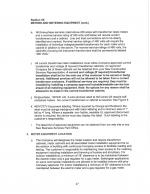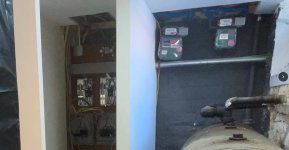Thank you. But if we face a situation like that shown below (wall in the middle), the 3 feet clearance is met?
I suppose we've held you on tenterhooks long enough to emphasize your question isn't answered directly in the NEC - or any common Code likely to be adopted by the AHJ. It is either answered by the local utility standards or a more general industry standard. Neither is the solution trivial.
I prefer API RP500, ANNEX D as the most analytical approach to your situation. Begin with establishing the fuel source. In your case, the gas meter's regulator. The next step can be complicated; that is, determine the applicable "hazard radius". We would usually need to know pressure, flow rate, volume, flammable material characteristics, ventilation rate, etc. But, in your case, 3' has been specified from whatever authoritative source you have. At this point, the key is to determine that the barriers are truly impervious to the flow of the flammable material. If they aren't, then a flat 3' separation, would be necessary. "Drywall or wooden wall" would be irrelevant.
But let us assume the wall
is impervious. The simplest solution would be to take an imaginary 3' string and define all points included within its end from the fuel source as classified. See API RP500, ANNEX D Figure D.3.



